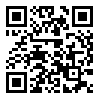

BibTeX | RIS | EndNote | Medlars | ProCite | Reference Manager | RefWorks
Send citation to:
URL: http://intjmi.com/article-1-200-en.html
Objective: about 70% of diabetic patients mortality is due to cardiac evets. The risk of cardiac death in diabetic patients is 3 times more than non-diabetics. The coronary artery disease among diabetic patients is more severe which is caused by silent ischemia. But it is not determined who need cardiac screening and about 41%of diabetic patients with silent ischemia are missed.the ankle brachial index is an independent, simple and noninvasive method in peripheral vascular disease diagnosis. The aim of this study was to evaluate the association of ABI and silent myocardial ischemia in diabetic patients.
Methods: this was an analytic cross-sectional study. The convenient sampling was used. About 204 patients with diabetics and without CAD history were included. For all of patient’s myocardial perfusion scan and ankle brachial index was done. All of statistical analysis was done by STATA-10.
Results: totally 204 diabetic patients without cronary artery disease symptoms.about 63.3%(127)were female and 37.7% were male. The mean age of patients was 57.39 ± 10.62 years old. About 60.8% (124) of patients were normal and 39.2% had silent myocardial ischemia. The mean of ABI was 1.0165±0.14. there were significant differences of ABI between normal and silent ischemic patients(p-value:0.000)
Conclusion: our findings showed that ABI is significantly different between patients with and without ischemia.ABI is The ABI is a simple, noninvasive, and inexpensive test that can be used to identify individuals who are at high risk of developing cardiovascular disease (diabetic patients).
| Rights and permissions | |
 |
This work is licensed under a Creative Commons Attribution-NonCommercial 4.0 International License. |


